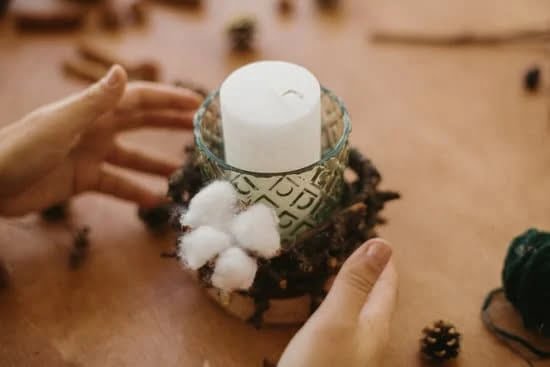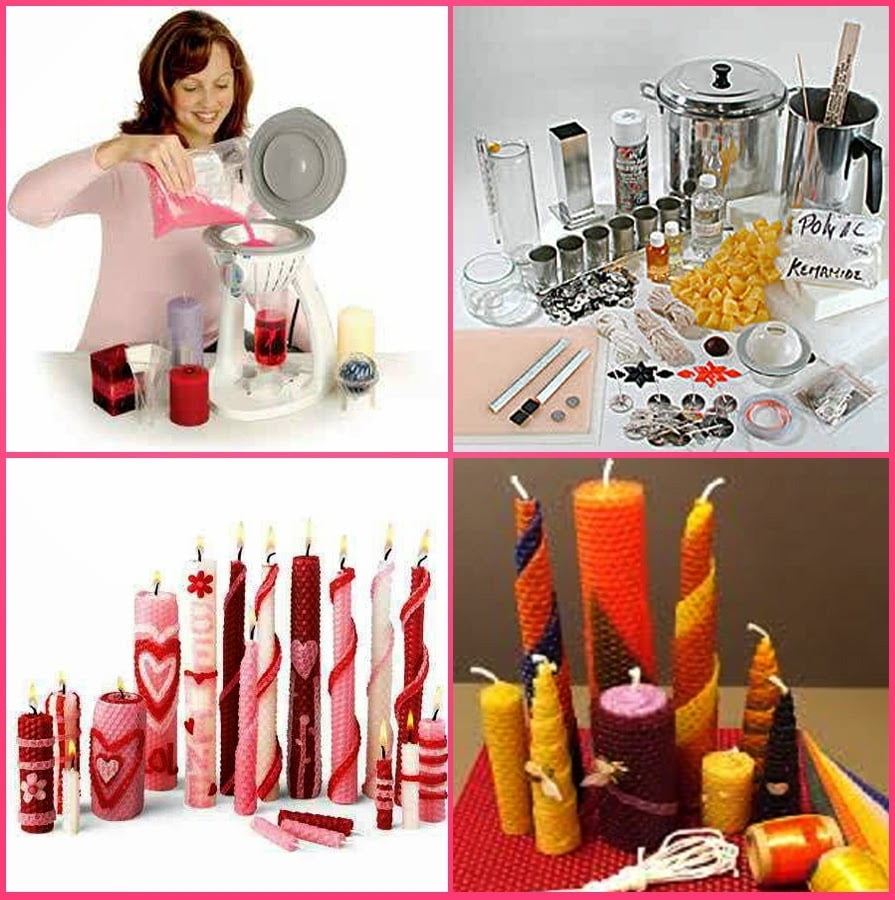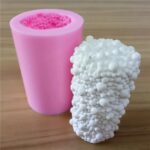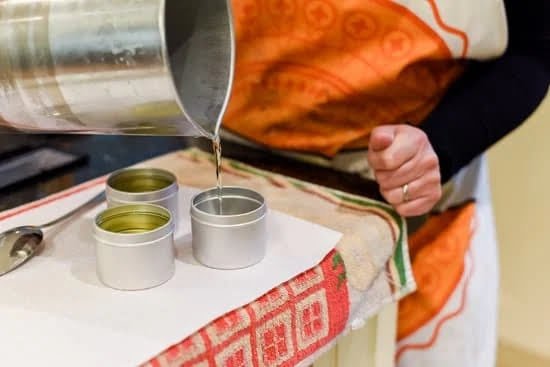The art of candle making has gained immense popularity in recent years, as more and more individuals seek to personalize their living spaces with unique scents and designs. However, the success of DIY candle making relies heavily on maintaining precise temperatures throughout the process.
This raises the question: can a candy thermometer be used as a suitable alternative tool for temperature control in candle making? In this article, we will explore the possibilities of using a candy thermometer in this craft and discuss its potential advantages and limitations.
Before delving into the specifics, it is important to understand how a candy thermometer works and its primary function in cooking sugar-based recipes. A candy thermometer is designed to measure the temperature of boiling sugar syrup, ensuring that it reaches the desired consistency at various stages of candy making.
Interestingly, there are several similarities between candy making and candle making when it comes to temperature requirements. Both processes involve working with heated substances that need to be melted or cooled down within specific temperature ranges for optimal results.
Now, let us address the main question at hand: is a candy thermometer suitable for candle making? In order to provide an informed analysis, we will discuss the pros and cons of using a candy thermometer in this context, considering crucial factors such as temperature range and accuracy. Additionally, we will explore alternative options specifically designed for candle making thermometers and compare their advantages over candy thermometers.
By gaining a deeper understanding of these possibilities, readers will be able to make an informed decision about choosing the right thermometer for their candle making endeavors. Whether you are new to this craft or an experienced enthusiast looking to enhance your techniques, this article aims to provide valuable insights into utilizing a candy thermometer effectively or exploring other alternatives available in the market.
Understanding the Basics
A candy thermometer is a useful tool in the kitchen for measuring the temperature of sugar-based recipes, but can it also serve as a suitable thermometer for candle making? To answer this question, it is essential to understand how a candy thermometer works and its primary function in cooking sugar-based recipes.
Candy thermometers are designed to measure temperatures ranging from approximately 100°F (37°C) to 400°F (204°C). They typically consist of a long, thin metal probe attached to a dial or digital display that shows the temperature. The probe is inserted into the liquid being measured, and as the temperature rises, the mercury or digital sensor responds accordingly, providing an accurate reading.
In terms of candle making, using a candy thermometer can be beneficial due to the similarity between candy making and candle making when it comes to temperature requirements. Both processes involve heating materials to specific temperatures for desired outcomes. However, there are some factors to consider before solely relying on a candy thermometer for your candle making endeavors.
| Candy Thermometer | Dedicated Candle Making Thermometer |
|---|---|
| Measures temperature range from approximately 100°F (37°C) to 400°F (204°C) | Measures temperature range tailored specifically for candle making |
| May lack precision and accuracy needed for precise candle making temperatures | Provides accurate readings within desired temperature ranges |
| Affordable and easily accessible | Variety of options available at different price points |
While using a candy thermometer may be sufficient for certain stages of the candle-making process, such as melting wax or adding fragrance, it may not provide the precision required for other critical aspects like pouring the wax into molds. For optimal results and to ensure accurate temperature control throughout the entire candle-making process, it may be worth considering dedicated candle making thermometers.
Dedicated candle making thermometers offer features specifically designed for the intricacies of candle making. They are calibrated to measure temperatures within the ideal range, providing greater accuracy and control. Additionally, these thermometers come in different models, including digital or analog options, catering to various preferences and budgets.
Is a Candy Thermometer Suitable for Candle Making?
Evaluating the Suitability
When it comes to candle making, maintaining precise temperatures throughout the process is crucial for achieving optimal results. This raises the question: can a candy thermometer be used effectively in candle making? To answer this, we need to delve deeper into the pros and cons of using a candy thermometer for this purpose.
One of the main factors to consider is the temperature range that a candy thermometer can measure. Candy thermometers are designed to handle high temperatures, usually up to 400 degrees Fahrenheit (204 degrees Celsius) or more.
This makes them suitable for tasks such as melting wax, which typically requires temperatures between 150-185 degrees Fahrenheit (66-85 degrees Celsius). However, when it comes to other aspects of candle making, such as adding fragrance oils or pouring the melted wax into molds, lower temperatures may be required.
Another aspect to consider is the accuracy of a candy thermometer. While they may provide accurate readings within their intended temperature range, they may not be as precise at lower or higher temperatures. Additionally, some candy thermometers may have larger gradations on their scales, making it challenging to precisely monitor small temperature variations required for specific candle making techniques.
Weighing the Pros and Cons
Using a candy thermometer for candle making does come with its advantages. Firstly, if you already have a candy thermometer at home or are able to easily acquire one from your local kitchen supply store, it can save you both time and money compared to investing in a dedicated candle making thermometer. Additionally, candy thermometers are generally durable and built to withstand high heat, ensuring they won’t easily break while handling hot wax.
However, there are also some drawbacks involved in relying solely on a candy thermometer for candle making. As discussed earlier, the limited temperature range and potential inaccuracies at extreme temperatures may lead to difficulties in achieving precise results throughout the different stages of candle making. This can impact the overall quality of your candles and hinder your ability to experiment with advanced techniques that require more precise temperature control.
In the next section, we will explore alternative thermometer options specifically designed for candle making, which may offer more accuracy and convenience than using a candy thermometer alone. By weighing the pros and cons of each option, you can make an informed decision on the most suitable thermometer for your specific candle making needs.
Candle Making Temperatures
When it comes to candle making, maintaining precise temperatures throughout the process is crucial for achieving optimal results. Different aspects of candle making require specific temperature ranges, including melting wax, adding fragrance, and pouring the melted wax into molds. In this section, we will explore the ideal temperature ranges for each step of the candle making process.
- Melting Wax: The ideal temperature range for melting wax varies depending on the type of wax being used. For most types of candle wax, such as soy or paraffin, the recommended temperature range is between 160°F and 190°F (71°C and 88°C). This allows the wax to melt evenly and thoroughly without overheating or scorching.
- Adding Fragrance: When it comes to adding fragrance to your candles, it’s important to do so at the right temperature to ensure that the scent is properly infused into the wax. The general rule of thumb is to add fragrance when the melted wax reaches a temperature between 185°F and 200°F (85°C and 93°C). This allows for better fragrance retention in the finished candles.
- Pouring Wax: The pouring temperature is crucial for ensuring that your candles set correctly with a smooth finish. The ideal pouring temperature depends on factors such as the type of wax and ambient conditions.
However, in general, most candle makers aim to pour their melted wax at a temperature between 130°F and 165°F (54°C and 74°C). This range allows for good adhesion between different layers of colored or scented waxes if creating multi-layered candles.
It’s important to note that using a candy thermometer may pose challenges when trying to maintain these precise temperature ranges throughout the candle making process. Candy thermometers are primarily designed for measuring higher temperatures typically used in cooking sugar-based recipes like caramel or fudge. They may not be as accurate or have a wide enough temperature range to meet the specific needs of candle making.
In the next section, we will explore alternatives to candy thermometers that are specifically designed for candle making and discuss how they offer advantages in terms of accuracy, temperature range, and ease of use. These dedicated candle making thermometers can be valuable tools for ensuring precise temperature control throughout the entire candle making process.
| Aspect | Ideal Temperature Range (°F) |
|---|---|
| Melting Wax | 160°F – 190°F |
| Adding Fragrance | 185°F – 200°F |
| Pouring Wax | 130°F – 165°F |
Alternatives to Candy Thermometers
When it comes to candle making, maintaining accurate temperatures is crucial for achieving the desired results. While a candy thermometer can be a tempting option due to its accessibility and affordability, dedicated candle making thermometers offer several advantages that make them worth considering.
One popular alternative to a candy thermometer is a digital infrared thermometer. These thermometers use infrared technology to measure the temperature without physically touching the wax or other materials. They provide quick and accurate readings, allowing you to monitor the temperature of your melting wax or fragrance oils from a distance. Digital infrared thermometers are especially convenient for larger candle-making projects or when working with hot materials that may pose a safety risk.
Another option to consider is a glass mercury thermometer. These traditional thermometers have been used in candle making for years due to their accuracy and simplicity. With clear markings indicating temperature ranges, they make it easy to track and maintain the ideal temperatures required at different stages of the candle-making process. However, it’s important to handle glass mercury thermometers with caution, as they contain toxic mercury and should be disposed of properly if broken.
For those who prefer a more modern approach, there are also digital probe thermometers specifically designed for candle making. These thermometers feature long probes that can be inserted directly into your melted wax or mixture to provide precise temperature readings. Some digital probe thermometers even come with adjustable alarms that alert you when the desired temperature range is reached, ensuring optimal results every time.
Making the Most of Your Candy Thermometer
Using a candy thermometer for candle making can be a convenient and cost-effective option, but it requires some additional techniques to ensure accuracy. Here are some tips and tricks for making the most of your candy thermometer in candle making:
Calibration Techniques
Before you start using your candy thermometer, it’s crucial to calibrate it. Fill a pot with water and bring it to a rolling boil. Immerse the thermometer into the boiling water without touching the sides or bottom of the pot. The thermometer should read 212°F (100°C) at sea level since that’s the boiling point of water. If it doesn’t, take note of the difference and adjust your future readings accordingly.
Measurement Adjustments
When using a candy thermometer for candle making, keep in mind that wax has different properties than sugar syrup. Wax can create bubbles or foam on its surface, which can affect temperature readings. To obtain accurate measurements, gently stir or tap the side of your container to release any trapped air bubbles before taking a reading.
Troubleshooting Tips
If you encounter issues with your candy thermometer while making candles, here are some troubleshooting tips:
- If you notice that your wax is cooling too quickly or not setting properly after pouring, try using insulation techniques like wrapping your mold or container with towels or blankets to maintain heat.
- In case you find that your wax is overheating and reaching temperatures higher than necessary, remove it from the heat source immediately and let it cool down gradually.
- Remember that external factors such as room temperature and drafts can also impact temperature readings. Avoid placing your candle-making setup near open windows or air vents.
By following these tips and tricks, you can make the most of your candy thermometer for candle making. While dedicated candle-making thermometers offer more precise temperature control and specialized features, using a candy thermometer can still yield satisfactory results for beginners or those on a budget. Experiment with different techniques and adjustments to find the best approach that works for you and your candle-making process.
DIY Candy Thermometer Hacks for Candle Makers
With the increasing popularity of DIY candle making, it’s no surprise that enthusiasts are always looking for cost-effective alternatives to traditional tools. One such tool is the candy thermometer, which can be easily repurposed for candle making purposes. However, if you don’t have a candy thermometer readily available, there are some creative DIY hacks you can try to achieve accurate temperature control in your candle making process.
Glass Thermometer
One simple option is to use a glass thermometer commonly found in home brewing kits or aquariums. These thermometers are typically long and slender, making them suitable for measuring the temperature of melting wax and fragrance additions. It is important to ensure that the thermometer is clean and sanitized before use to prevent any contamination.
Infrared Thermometer Gun
Another alternative is using an infrared thermometer gun. This non-contact device measures surface temperatures by detecting infrared radiation emitted from an object. Simply point the gun at the surface of your wax or container to get an instant temperature reading without any contact. Keep in mind that this type of thermometer may not be as accurate as others, so it’s recommended to perform several readings from different angles for more precise results.
Digital Kitchen Thermometer
A digital kitchen thermometer with a probe can also come in handy for candle makers. Make sure to choose one with a wide temperature range that includes higher temperatures needed for melting and pouring wax. The probe should be inserted directly into the melted wax or mixture while measuring the temperature accurately.
While these DIY candy thermometer hacks can provide alternatives if you don’t have access to a dedicated candle making thermometer, it’s important to note that they might not offer the same accuracy and precision as specialized tools designed specifically for candle making purposes. Consider investing in a proper candle making thermometer if you plan on pursuing this hobby long-term or if accuracy is crucial for your candle making process.
Final Thoughts
In conclusion, the use of a candy thermometer for candle making is a topic that sparks curiosity among DIY enthusiasts. We have explored the possibilities and discussed the basics of how a candy thermometer works. While it may seem like a convenient alternative, we have also examined whether it is suitable for candle making.
When it comes to maintaining precise temperatures throughout the candle making process, using a candy thermometer has its pros and cons. On one hand, candy thermometers can measure temperatures within the required range for melting wax and adding fragrances. However, they may lack the accuracy needed for pouring temperatures, which could result in issues such as uneven burning or poor scent throw in your candles.
To ensure effortless candle making, dedicated candle making thermometers offer better precision and reliability. Although they may come at a slightly higher price point, these specialized thermometers provide specific temperature ranges and features tailored for candle making. They are designed to withstand higher temperatures and provide accurate readings during critical stages of the process.
Frequently Asked Questions
Can I use any thermometer for candle wax?
Using any thermometer for candle wax may not be the most accurate or efficient method. While some thermometers can be used for a wide temperature range, it is important to consider the specific requirements of candle making.
Candle wax typically needs to be melted and maintained at a specific temperature range, which may vary depending on the type of wax being used. It is recommended to use a thermometer specifically designed for candle making, such as a digital or analog wax thermometer with a temperature range suited for candle wax.
Can you use a candy thermometer for other things?
Yes, a candy thermometer can certainly be used for other things besides measuring candy temperatures. Candy thermometers are designed to measure high temperatures accurately and can come in handy for various cooking tasks that require precise heat control.
They can be used while preparing syrups, deep-frying, brewing beer or making custards, among many other applications where temperature monitoring is crucial. However, it is important to clean the thermometer thoroughly after each use to avoid cross-contamination of flavors.
How can you tell the temperature of a candle without a thermometer?
If you find yourself without a thermometer but need to determine the temperature of a candle, there are alternative methods that can provide rough estimates. One approach is by assessing the behavior of the flame itself. Different characteristics of the flame, such as its color and height, can indicate different temperatures.
Generally speaking, if the flame appears small and weak with minimal movement or flickering, it suggests that the candle is relatively cool. On the other hand, if the flame burns larger, stronger, and more vigorously with intense movement and possible smoke-like emanations from around the wick base, it indicates higher temperatures. However, it’s important to note that these visual cues are not precise measurements and should only serve as general indicators rather than exact values when it comes to determining candle wax temperature without a proper thermometer.

Welcome to my candle making blog! In this blog, I will be sharing my tips and tricks for making candles. I will also be sharing some of my favorite recipes.





